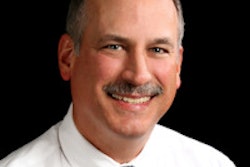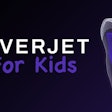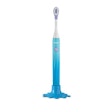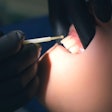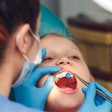
Children are often nervous when visiting the dentist. They are in a foreign place surrounded by strange sounds and people, and they are often unsure of what will happen to them.
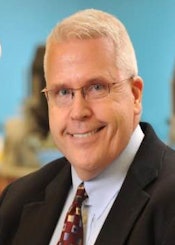 Robert Wade, DDS.
Robert Wade, DDS.The key to achieving better clinical outcomes is to quickly acclimate children to this environment by appealing to their sense of wonder. Dentists need to shape children's experience into something that is understandable, comfortable, and familiar to them.
In our office, this process begins in the reception area. There is a long "wiggly" wall, parts of the ceiling that tip one way and the other, and kinetic sculpture, all of which challenge a child's expectations of reality. With multiple touchscreen games and other fun toys, this is an area designed to make children more comfortable than adults.
This is the opposite of what children are accustomed to. Children live in an adult's world. We turn that around to make them ask themselves, "If this is different than I expected, maybe the rest of the experience will be too."
Children begin to question their internal narrative of concern in the waiting room. This process flows into the treatment area, where aspects of the reception room continue. This gives the child a sense of familiarity with the environment, and familiarity leads to a lowered anxiety level.
 Dr. Wade's "wiggly" wall helps alter children's mindset when they walk into his practice. Image courtesy of Dr. Robert Wade.
Dr. Wade's "wiggly" wall helps alter children's mindset when they walk into his practice. Image courtesy of Dr. Robert Wade.One of the primary tasks of the dentist is to establish a communicative and trust-based relationship with the child, and to do so quickly. Parents want to protect their children and often interfere with this dentist-patient relationship. We use a written quick reference guide for parents, entitled "How to help your children during their dental visit." If that does not induce them to stay in their role of quiet support, then a direct verbal intervention by myself or my assistant is necessary and usually effective.
Children feel safe with a kind yet directive guide (the dentist) through this new world. I usually wear a smock with familiar prints and brightly colored sneakers to give a sense of being part of their world. I also tell them that I will be letting them know what to do to be safe and feel good, and that if they listen they will have a great visit. Creating this open communication between dentist and child is vital.
Once the child is in the dental chair, the "sit still" clock starts. Younger children have a shorter time span of cooperation. Tools to extend kids' attention spans and shorten chair time are vital. Nitrous oxide and a familiar movie playing above them extend the attention span.
Shortening chair time, however, is a bit more challenging. Clinical tools that allow me to perform anesthesia-free procedures are helpful in reducing their time in the chair. From the child's point of view, if you can avoid using a needle or a drill, with its odd sound and vibration that makes you expect pain, and quickly finish the appointment, it's a win-win situation.
If, after the initial treatment, the child still has "time on the clock," meaning they are able to tolerate more treatment, I can perform "squeeze in" procedures, such as filling one or two surface cavities. This makes parents very happy as I'm able to perform more procedures in a single visit, so they don't have to schedule time off from work and take their child out of school to return for care.
As an example, I have a 10-year-old patient who has been highly fearful of needles and the sensations of the dentist, particularly numbness. I brought her through my practice by shaping her experience to make it less intimidating and helping her feel comfortable in the dental chair. Previously, she'd been unable to sit in the chair, but after showing her how my laser worked and introducing the sensations she could expect one by one, she was able to sit in the chair and allow me to treat her decayed molar. She did well using her trust in my staff and me, and she popped out of the chair so proud of herself!
In the final analysis, treating children is about making them feel nothing but good about themselves. It is rewarding to show children that they can have dental care and not be afraid. This is the first step in creating generations of adults who can go to the dentist without fear. Which in turn will result in an improvement in our country's oral care.
Robert Wade, DDS, is a pediatric dentist at Children's Dental Center of Central Iowa in Urbandale. Dr. Wade earned a Master of Science in child and family counseling from Creighton University, and he practiced as a child and family counselor in private practice for almost 10 years before earning his Doctor of Dental Surgery at the University of Iowa College of Dentistry and dedicating himself to pediatric dentistry.
The comments and observations expressed herein do not necessarily reflect the opinions of DrBicuspid.com, nor should they be construed as an endorsement or admonishment of any particular idea, vendor, or organization.





